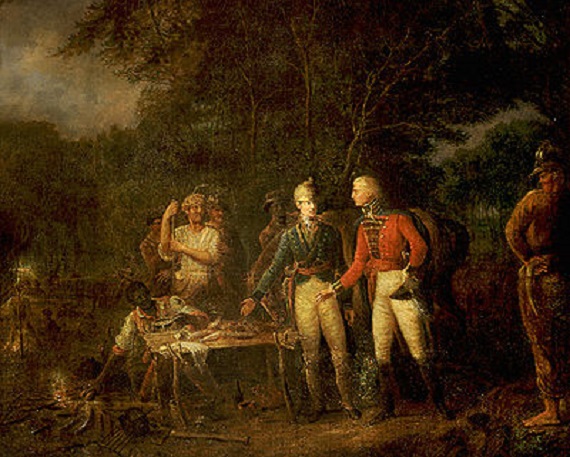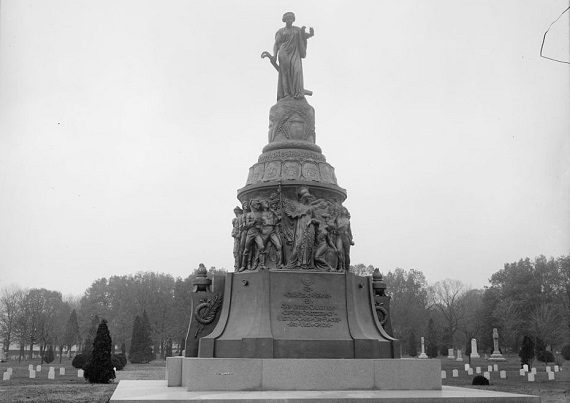John Oller, The Swamp Fox: How Francis Marion Saved the American Revolution (Da Capo Press, 2016)
Francis Marion is better remembered today than he used to be. There was a time, however, when, outside of his native South Carolina, hardly anyone without a good knowledge of the Southern theatre of the American Revolution would have heard of him. And there just weren’t that many Americans with that particular knowledge. In whatever education they may have received about the Revolution, the South’s important role in that epic struggle was either unknown by those doing the teaching, glossed over, or ignored. The result was that the extraordinary efforts of men like Marion, Thomas Sumter, Elijah Clarke and so many others in the fight for American independence in South went largely unheralded while those in more northerly regions received sustained and sometimes fawning attention from historians, popularizers, documentary film makers, etc. For example, in the preface to his book The Road to Guilford Courthouse: The American Revolution in the Carolinas, published in1997, New York author John Buchanan claims that, “On learning of my subject, a friend of mine, well educated, well read, intellectually curious, looked surprised and admitted, ‘I really don’t know what happened south of Philadelphia.’”
We shouldn’t perhaps think too badly of John Buchanan’s friend. The Revolution in the South was bloody and complex and in many respects the sources historians need to do the work of telling its story are pretty thin in places, and obscure in others. It’s not a story quickly or easily told, not least of all because it’s such a compelling one. A peek through the door requires you to go on inside, have a seat, and linger for a while. Those trying to teach the whole course of the Revolution, or learn about it on their own, in a limited time, can almost be forgiven for skimming over or gliding past certain phases of it when others in the same position before them had done likewise. The key word here, however, is ‘almost.’ What happened in the Southern theatre of the war determined the ultimate outcome of the Revolution, and Francis Marion was critical in making that determination. To know little or nothing about it, or about Marion, is to be essentially and fatally ignorant of the American Revolution, and that ignorance has consequences for how the rest of American history is understood.
None of this is to say that Marion was ever completely forgotten. His legend loomed large among members of the Revolutionary generation and persisted in those which followed. His earliest biographer was the famous Mason Locke Weems who, as with the tale of the cherry tree in his biography of George Washington, embellished and exaggerated too much in his 1805 Life of General Francis Marion for it to be considered accurate. The audience Weems had in mind, however, was primarily young men whom he hoped would be inspired by the virtues of heroes like Washington and Marion. If a little exaggeration helped achieve that, then so be it. Far superior as a true, comprehensive and accurate biography was that of the great South Carolina writer William Gilmore Simms published in 1844. Simms did extensive and solid historical research in preparing his volume, and it was the most successful, financially and as a work of history, of the all the biographies he wrote. Among Marion’s 20th Century biographers, the best were Robert D. Bass and Hugh F. Rankin. Bass’s book, published originally in 1959, has long been widely available, especially in South Carolina. Rankin’s book from 1973 is rare and expensive. Nevertheless, none of these biographies, nor the collective force of all of them together for that matter, proved enough to lift Marion’s memory into the larger national awareness. It took a movie to do that.
The box office success of Mel Gibson’s 2000 film The Patriot began what we might consider a period of rediscovery for Francis Marion. Gibson’s character in the film, Benjamin Martin, is based on Marion, and to a lesser extent on other prominent South Carolina Revolutionary figures such as “The Gamecock” Thomas Sumter, Daniel Morgan and Andrew Pickens. Critics attacked the film as historically inaccurate in several respects, which it is, but all historical films are guilty of that, to varying degrees. Filmgoers, however, liked the movie and it has remained popular, and that has, I suspect, inspired a renewed interest in and admiration for the real man behind the film. In fact, the Consolidated Natural Resources Act passed by Congress in 2008 included authorization for a Francis Marion Memorial to be built in Washington, D.C. It’s doubtful such a thing would have been possible prior to Gibson’s film and the interest it generated. There is now a large and vital group of scholars out there, both professional and amateur, studying the Revolution in the South and Francis Marion’s role in it. The best place to see the results of that interest is the website www.southerncampaigns.org .
Given this renewed interest, it’s surprising that it has taken as long as it has to have a genuinely new and insightful book about Marion, but that is exactly what we have in John Oller’s The Swamp Fox: How Francis Marion Saved the American Revolution. Oller is not a professional historian, but a journalist and a lawyer. This is noteworthy because being both probably taught him to do something too many professional historians seem either incapable or unwilling to do today; tell a good story in a well-written narrative. Oller does just that, but he also does more. His is a military biography that goes right to core of what we most want to know about Marion. We want to know about General Marion the warrior, the tactician, the master of guerrilla warfare, the leader of men in battle. This is precisely what we get. Oller puts real history behind the legend of Marion, giving us a detailed and engaging account of The Swamp Fox’s military career. Beside the clear prose, the great strength of Oller’s book is the solid research behind it. Making full use of new sources and new information like the work of archeologist Steven D. Smith who has done much to identify specific sites in the South Carolina lowcountry associated with Marion and his men, Oller is able to tell us more about Marion than any previous biographer. The picture we have is of a real man who was every bit as extraordinary as the legend, a master of partisan warfare and a true patriot who deserves a place alongside Washington in the pantheon of heroes of America’s Revolutionary era.







